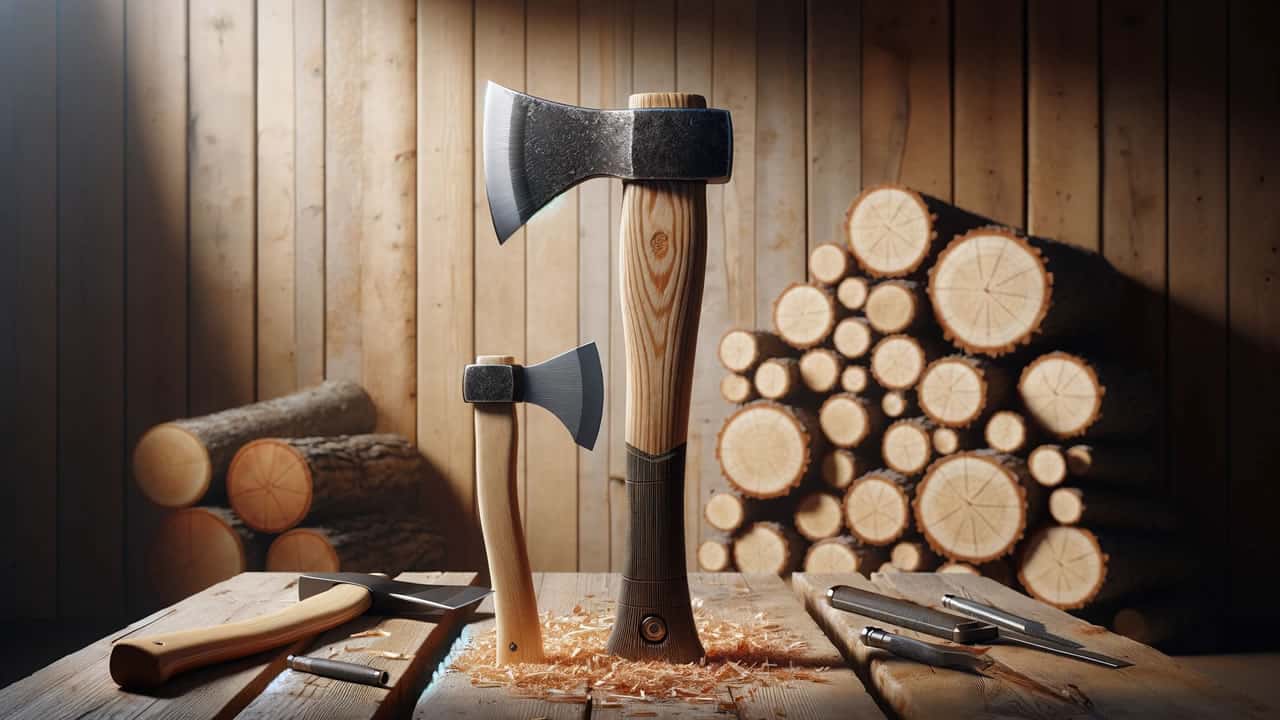
When it comes to outdoor tools, axes and hatchets are often mentioned in the same breath. While they may look similar and share some functions, they are distinct tools designed for different tasks. Understanding their differences is key to determining which one you need for your specific outdoor activities or projects. This article delves into the distinct features, uses, and advantages of both axes and hatchets.
An axe is a larger tool compared to a hatchet. It’s designed for heavier tasks and is characterized by the following features:
The most noticeable feature of an axe is its long handle, usually made of wood, fiberglass, or composite materials. The length can vary but typically ranges from 20 inches to 36 inches. This longer handle provides greater swing power, making the axe ideal for heavy-duty tasks.
The head of an axe is heavier than that of a hatchet, weighing between 3 to 6 pounds. The added weight delivers more force, making it suitable for challenging jobs like felling trees or splitting large logs.
There are several types of axes, each designed for specific tasks:
Axes are best suited for:
A hatchet is essentially a small, one-handed axe. It’s designed for portability and lighter tasks, with the following characteristics:
Hatchets have a much shorter handle than axes, typically around 10 to 18 inches in length. This makes them easy to wield with one hand.
The head of a hatchet weighs between 1 to 2 pounds. This lighter weight, combined with a shorter handle, makes the hatchet less powerful but more precise and easy to control.
While hatchets are primarily known for chopping, they often have other features:
Hatchets are ideal for:
The decision to choose an axe or hatchet largely depends on your intended use:
Both axes and hatchets are invaluable tools, each excelling in different scenarios. For heavy chopping, splitting large logs, or felling trees, an axe is your go-to tool. On the other hand, for camping trips, small chopping tasks, or if you need a tool that’s easy to carry and store, a hatchet would be the ideal choice. By understanding the specific uses and advantages of each, you can make an informed decision on which tool best fits your needs, ensuring efficiency, safety, and enjoyment in your outdoor endeavors or home projects.
Axes are tools that have been a vital part of human civilization for thousands of years. Whether used for chopping…
Axes have long held a place in our collective imagination, symbolizing strength, survival, and sometimes even terror. From ancient legends…
Bushcraft axes are a fundamental tool for survival and outdoor enthusiasts. These axes are not just tools for wood chopping…
Chopping wood is a fundamental skill, whether for a seasoned lumberjack, a homeowner managing their firewood supply, or an outdoor…
In the realm of wilderness survival skills, an axe is one of the most versatile tools you can have at…
For anyone involved in wood cutting, whether as a professional or a hobbyist, choosing the right axe is crucial. Axes…